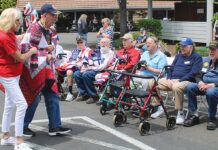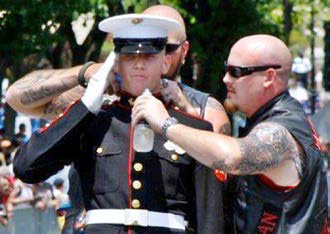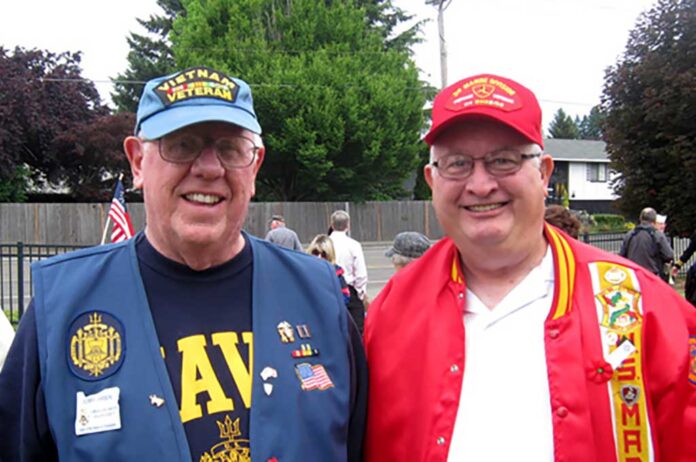
Quick planning brings Joint air-sea-land assault to prevent VC surprise attack
Jerry Larsen, a Tualatin resident and Naval Academy graduate, had a significant role in the first US major military offensive action during the Vietnam War. Called Operation Starlite by U.S forces, it was known in Vietnam as Battle of Van Tuong. He shared this experience as a speaker at last year’s Tualatin Veteran Appreciation Breakfast. He said the operation was conducted about a year after the two Gulf of Tonkin incidents which “may or may not have happened” but were considered an “act of war.” The “incidents” prompted Congress to pass a resolution giving President Johnson a blank check regarding military engagement in Vietnam. During that year, US military grew from 800 in advisory capacities to 88,000. Jerry was the Communications Officer aboard the flagship, USS Bayfield, for an 11 ship amphibious squadron including troop transports (APA) cargo chips (AKA) and Landing ship docks (LD).
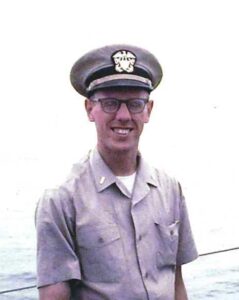
One of the largest US bases in 1965 was at Chu Lai which is 29 miles north of Da Nang. It had an airport, large Marine base and a powerful communications tower, making it a prime target. After a learning from a Viet Cong deserter that the VC were getting ready to attack the Chu Lai from the south from a Viet Cong base near Van Tuong, U.S. forces immediately began preparations to do a pre-emptive strike, with utmost secrecy so that surprise would be complete. Jerry put together the Navy communication plan which includes all aspects of radio and signal communications , including the various circuits, voice and encrypted teletype, signal flags, flashing light and radio silence criteria. There were many “flash” top secret messages sent during that period. Jerry was responsible for getting them to his Commodore and others properly cleared and involved in the operation.
The Starlite assault took place on the Van Tuong peninsula. Jerry said there were five battalions of marines,5,5000, involved. “It was a coordinated assault from land, coming down from Chu Lai; from the air using “vertical envelopment” with helicopters from land bases and from the LPH (Landing Platform Helicopter) Iwo Jima. One battalion came from the sea, embarking from amphibious ships that had picked up troops in Chu Lai. The seaborne attack was just like the movie “Away All Boats” with Jeff Chandler where the marines get in landing craft which circle and finally form waves that hit the beach in sequence. Naval gunfire support came from the cruiser Galveston and a couple of destroyers. There were F-8, F-4 and A-4 jet aircraft dropping bombs and strafing the beach ahead of time, with more softening up from shore-based artillery.” Jerry explained that this was an incredible amount of inter service coordination, completed in two days, all done in top-secret fashion.
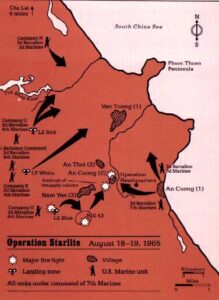
Starlite was a success. The VC did not attack Chu Lai. The assault resulted in 680 confirmed VC killed at a cost of 54 KIA Marines. The word was that this was a major victory, proving that US forces could easily overwhelm and destroy enemy forces; and the war would end quickly. That was the message to the American public. Jerry disagreed “nothing was further from the truth. The VC learned from this action and never again put themselves where they could be attacked from the sea in this fashion.” He continued “also, the American public were told that further actions would deplete the enemy’s forces and demoralize them. But even with severe losses, they quickly reinforced their units with new troops.” Regarding war tactics in Vietnam, Jerry said the Marines had been successful in other conflicts using “pacification” with the locals which basically means winning their hearts and minds. But the Army generals were dead set on using the WWII ground war tactics, which were inappropriate as was shown by the failures in Vietnam. The Army was running things, so the Marines had to subordinate their more modern strategic concepts to Army direction, and undoubtedly many lives were lost because of this. He concluded “after a decade of fighting, the US lost over 58,000 but the Vietnamese lost 1.1 million, and everyone knows what it did to our country” .
The stress of wartime military gave Jerry a minor case of dysentery, going down from 165 pounds to 140 during Operation Starlite. His ship did not have air conditioning so living conditions were terrible in Vietnam in the summer. But Jerry said “the hardest part was being gone for ten months from his wife and two children – a month old son and 14 month old daughter. He explained that PC’s, Skype and email communication hadn’t been invented yet so his only communication home was by written letter.” He concluded “you ship out and wonder if you are coming back.” He did come back and is thankful for it.
Note: As this column was being written, Jerry and his wife, Jan, after 25 years of living in Tualatin, were in the process of downsizing, moving to King City. Jerry has been very active in our community, most recently serving on the board of the Tualatin Community Police Foundation.

Midshipman Jerry as a plebe (and crewcut) at Naval Academy. 
USS Bayfield, flag ship for amphibious ships. 
Maines preparing for Operation Starlite battle. 
Jerry and Jan were married on Oct 27, 1962. Marriage earlier than planned because Cuban crisis changed Jerry’s Navy duties. 
Jerry and Jan 25th Anniversary in 1987. 
Jerry and Jan on 50th Anniversary 2012.



